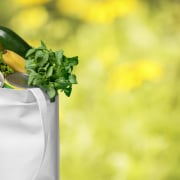Establishing in vitro Protein Digestibility as an Alternative to Animal Testing
Recorded June 17, 2021
Continuing Education Hours: IAFNS is a Continuing Professional Education (CPE) provider with the Commission on Dietetic Registration (CDR). CDR Credentialed Practitioners will receive 1.0 Continuing Professional Education Unit (CPEU) for completion of this recorded webinar until June 17, 2024.
Description: As an alternative to animal testing, this session provides the rationale and approach for an inter-laboratory study protocol for the purpose of gaining an official method of analysis status for determining protein digestibility using in-vitro approaches. The primary aim is to gain feedback on this approach from differing stakeholders involved in calculating protein quality for foods and food ingredients.
Opening and Introductions
Kathy Greaves, PhD, Principal Nutrition Scientist, The Kellogg Company
Substantiating Protein Content Claims: Are there Alternatives to Bioassays?
James House, PhD
Professor, Department of Food and Human Nutritional Sciences
University of Manitoba
Panel Discussion
Additional Panelists
Maya Villeneuve, RD, Health Canada
Elaine Krul, PhD, EKSci, LLC; and others
Q&A
Performance Indicators
- 4.2.7 Integrates relevant information with previous learning, experience, professional knowledge, and current practice models.
- 6.2.5 Applies research/evidence-based findings to improve practice, service delivery, and health and nutrition of customers.
- 8.1.2 Applies knowledge of food and nutrition as well as the biological, physical and social sciences in practice.
- 8.1.1 Interprets and applies evidence-based comparative standards for determining nutritional needs.










